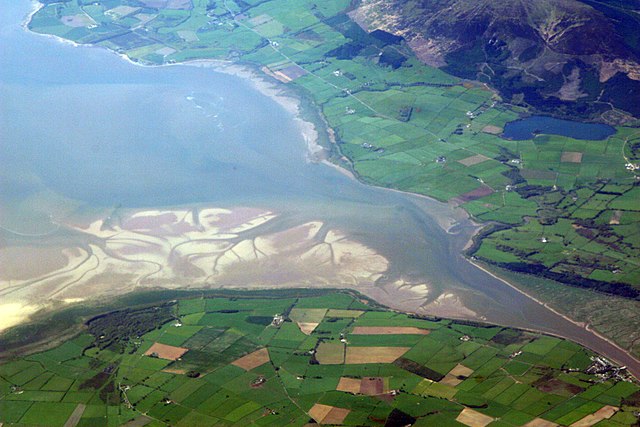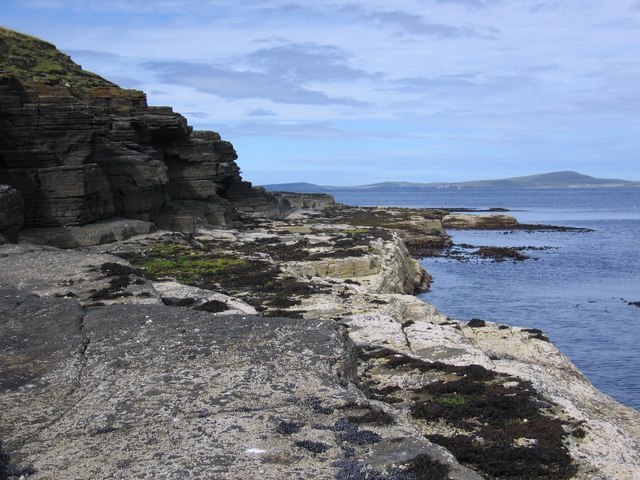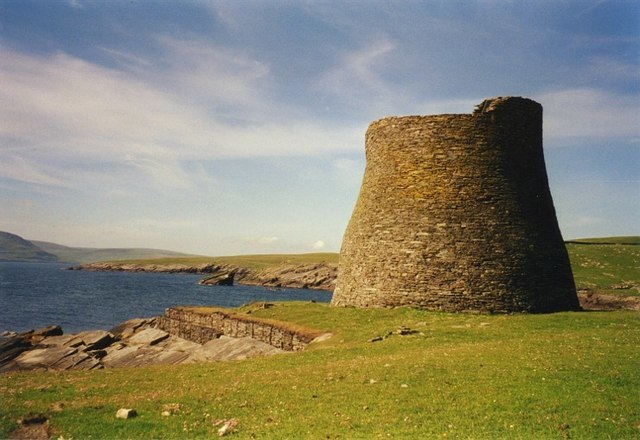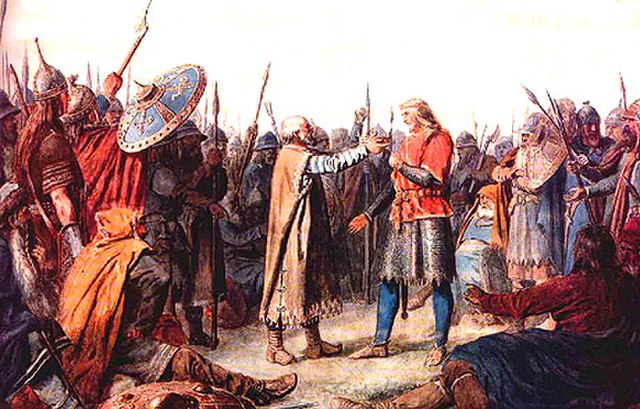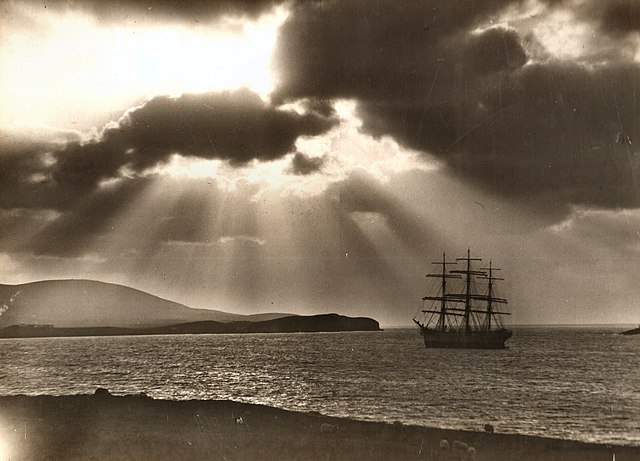Firth is a word in the English and Scots languages used to denote various coastal waters in the United Kingdom, predominantly within Scotland. In the Northern Isles, it more often refers to a smaller inlet. It is linguistically cognate to fjord, which has a more constrained sense in English. Bodies of water named "firths" tend to be more common on the Scottish east coast, or in the southwest of the country, although the Firth of Clyde is an exception to this. The Highland coast contains numerous estuaries, straits, and inlets of a similar kind, but not called "firth" ; instead, these are often called sea lochs. Before about 1850, the spelling "Frith" was more common.
The estuary of the River Nith, opening into Solway Firth south of Dumfries.
Entrance to the Cromarty Firth, with oil rigs behind
Dundee from the Fife shore of the Firth of Tay
Cliffs in Saviskaill Bay on Rousay, looking northward to Westray across Westray Firth
The Northern Isles are a chain of islands off the north coast of mainland Scotland. The climate is cool and temperate and highly influenced by the surrounding seas. There are two main island groups: Shetland and Orkney. There are a total of 36 inhabited islands, with the fertile agricultural islands of Orkney contrasting with the more rugged Shetland islands to the north, where the economy is more dependent on fishing and the oil wealth of the surrounding seas. Both archipelagos have a developing renewable energy industry. They share a common Pictish and Norse history, and were part of the Kingdom of Norway before being absorbed into the Kingdom of Scotland in the 15th century. The islands played a significant naval role during the world wars of the 20th century.
The Iron Age Broch of Mousa
King Olav Tryggvason of Norway, who forcibly Christianised Orkney. Painting by Peter Nicolai Arbo.
James III and Margaret, whose betrothal led to Shetland passing from Norway to Scotland
Full-rigged ship Maella, of Oslo, in Bressay Sound circa January 1922

